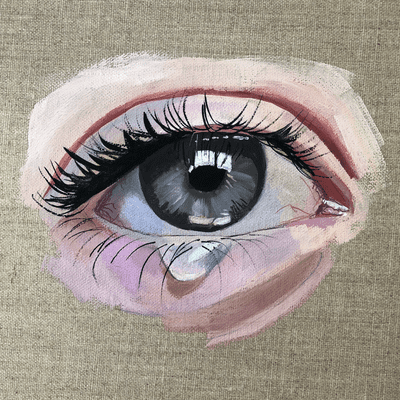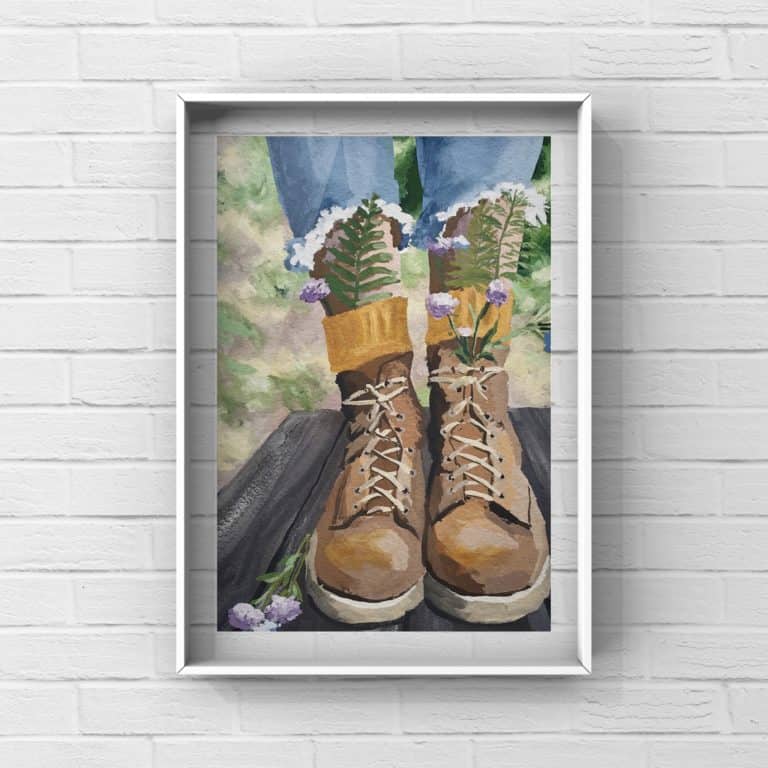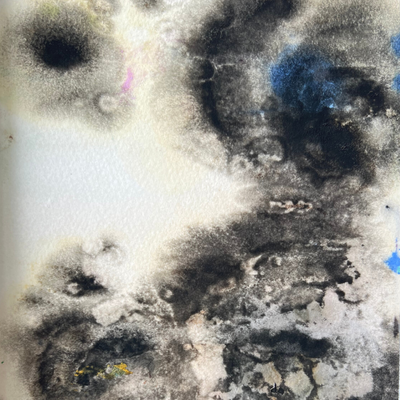8 Common Mistakes to Avoid with Gouache Paint
Artists can use gouache for a wide range of artistic styles, but like any medium, it’s important to know its unique properties so you will avoid making mistakes. Here are some common mistakes to avoid with gouache paint:
Table of Contents
- Adding too much water to the gouache:
- Using too many layers of gouache:
- Not allowing the paint to dry completely:
- Not cleaning your gouache brush:
- Not using a proper surface:
- Not correctly storing the gouache paint:
- Not understanding the differences between gouache and other mediums:
- Not practicing:
Adding too much water to the gouache:
Gouache paint is water-soluble and can be thinned with water to create different effects. However, using too much water can result in a weak and diluted color. Artists that discover gouache after painting with watercolor for a while have a tendency to use gouache too diluted, like watercolor. This can also be a style, but if you want to get the most out of gouache, you should use it with a creamy consistency.
Start with a tiny amount of water and gradually add more if necessary to prevent this. Tap the brush on the edge of the jar to remove excess water before taking the paint. This is all about water control.
Using too many layers of gouache:
It’s essential to work fast and avoid adding too many layers. Try using a thinned mixture of gouache and water instead of thick gouache paint for your first layer, then apply another layer of gouache when the first one is dry, increasing the consistency on each layer.
But no matter how thin the first layer is, you will be limited at some point. Depending on the paper and the thickness of your paint, I’ve found that five layers are the maximum you can apply with gouache. After that, you’ll have cracking, flaking, mudding, and all -ing things that you don’t want to happen!

Not allowing the paint to dry completely:
Gouache paint dries quickly, but it’s important to allow each layer to dry completely before adding more paint. The colors will blend and become muddy if you try to paint over wet layers, and this is a common issue when layering a dark color over a light one. If you need to figure out how long to wait, err on caution and allow more time before applying the next layer.
Not cleaning your gouache brush:
It’s crucial to clean your brush after each color application when painting. Otherwise, the colors will blend and produce new shades that do not resemble what you had in mind! Although you usually prefer a single pure color, this can be done on purpose if you want to use various hues in a single brushstroke. You can cut the cleaning time by using a brush per color.
Not using a proper surface:
You can apply gouache on various surfaces, including paper, canvas, and wood. However, it’s essential to choose a suitable surface for the medium. For example, slippery surfaces will give you a hard time when painting. On the other hand, too rough textures will use a lot of paint and might be challenging to cover. In general, you should use a smooth surface for your painting, which will help you achieve the desired effect faster and more easily.

Not correctly storing the gouache paint:
Gouache paint can dry out quickly if left open, so it’s essential to store it properly. Make sure to close the tubes or lids tightly after each use, and consider using a palette with a wet palette system to keep the paint moist longer. It’s also important to store your paint in a cool, dark place. Direct sunlight can cause the paint to dry out quickly, so it’s best to keep it in a room with indirect light. You have many different options to store your gouache paint properly, paid or DIY.
Not understanding the differences between gouache and other mediums:
Gouache paint is often confused with watercolor or acrylic paint, but it has unique properties that make it distinct. For example, gouache paint is opaque, while watercolor is transparent. Understanding these differences can help you choose a suitable medium for your project. You may find ‘acrylagouache’ or ‘acrylic gouache,’ but it’s not gouache. It’s acrylic with a matte finish. Acrylic properties are different from gouache.
Not practicing:
Like any medium, the more you practice with gouache paint, the better you’ll use it. If your gouache paint stays nicely in its tube, you will never master it! Feel free to experiment and try new techniques to find what works best.
Avoiding these common mistakes will help you create beautiful and vibrant artwork. Happy painting!









